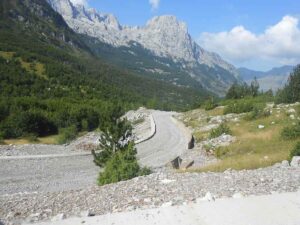Italian Esoteric Gardens and Initiatory Paths: Sicily – Palermo

The landscape garden was conceived in England between 1710 and 1730, that is, during the period of the European Enlightenment, which coincides with the spread of Freemasonry in England and Europe. Many landowners and intellectuals of the eighteenth century were Freemasons. Among them were famous people such as Alexander Pope, Arbuthnot, Edward Harley, the Earl of Chesterfield, James Addison, Richard Steele, Jonathan Swift, James Thomson, Lord Burlington, Lord Cobham, William Stuckley, Lord Montague, Voltaire, Montesquieu.
It is in fact at this point in its history that Freemasonry developed as a point of reference for intellectuals, politicians, nobles, artists and architects, thus encouraging a continuous exchange of ideas, aesthetic values and beliefs between English and European intellectuals.
Freemasons believed in virtue, progress, equality, and contributed to preparing the ground for the democratic revolutions of the late eighteenth century. These Enlightenment ideals (tolerance, equality, universalism, civic duty, natural religion, morality) that they helped to spread through their international connections were also reflected – through iconography and design – in the first “emblematic” landscape garden.
Once we understand the important role that Freemasonry played in the eighteenth century, and consider that those intellectuals who belonged to or had ties to this secret society were also responsible for developments in the arts – including landscape architecture – we can only agree that it is important to look for the relationship between Freemasonry and the first English landscape garden.
Humans, it is said, symbolize animals. At every stage of civilization, people have relied on symbolic expression, and advances in science and technology have only increased our reliance on symbols. The language of symbols is considered a science.
—We begin our esoteric journey from Sicily, precisely from the large park created in 1799 by Ferdinand III of Bourbon, when the Neapolitan Revolution, pushed by Napoleonic troops, expelled him from Naples (where he reigned under the name of Ferdinand IV). It seems that the sovereign wanted to reproduce the beauties of the palace of Portici.
However, he had no qualms about expropriating a whole series of lands, to realize his project: a park of about 400 hectares that was called the Royal Estate of Favorita. In the park of Favorita at the end of the 18th century an area was designated for balloons and hot air balloons and in 1790 the first flight took place there. In 1918 the Favorita airfield was inaugurated, which regularly hosted airships.
The park, designed in French style by the architect Giuseppe Venanzio Marvuglia from Palermo, was embellished with long tree-lined avenues that bordered groves and clearings, with exedras, seats and fountains, and reached its splendor during the nineteenth century.
Sicily is one of the most culturally intriguing and historically rich places in the world. Situated in the center of the Mediterranean, halfway between its western and eastern shores, at the point where Europe almost meets Africa, it has been swept by multiple waves of civilizations and has developed its own distinct and passionate culture.
Known to the ancient Greeks as the island of Persephone, it was a vital part of Magna Graecia, where philosophers Empedocles and Plato sought to implement wisdom in the aftermath of the school of Pythagoras across the strait in nearby Crotona. In the 10th and 11th centuries, Sicily became a brilliant center of Arab culture when Palermo became the jewel of the Islamic world with its poets, geographers and mosques.
In the 12th century, the incoming Norman impulse created the most tolerant, multicultural and radiant land of its time, a place where Catholics, Byzantines, Jews and Muslims coexisted and thrived. It was an island where esoteric knowledge flowed through ancient philosophers, Sufis, Neoplatonic troubadours, Kabbalists and Grail seekers.
Join scholars, artists, writers and historians as they explore these dimensions of Sicily. From pre-Socratic philosophers to Muslim poets to the Holy Roman Emperor Frederick II, “Stupor Mundi”, the cultural history of this island is deep, powerful and unexpected.
.:.
SOURCES
pastpreservers masonic / James Stevens Curl, The Art and Architecture of Freemasonry, London, 1991 / wikipedia / Gregory B. Stewart freemason / Maynard, Mack, The Garden and the City: Retirement and Politics in the Later Poetry of Pope 1731-1743, London Oxford University Press, 1969 / Swami Prabhavananda / Calogero Musumeci / Rudolf Steiner /…

















